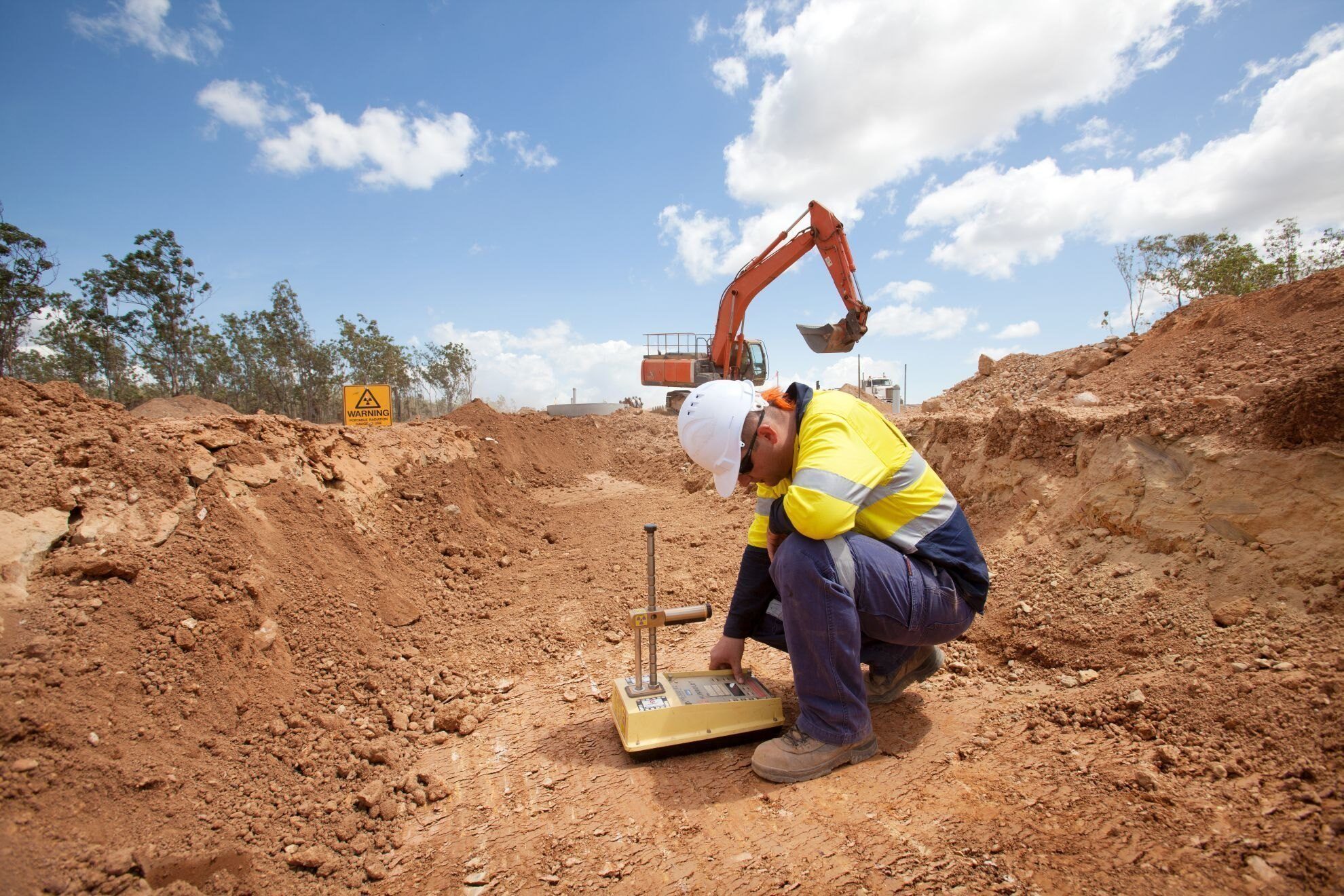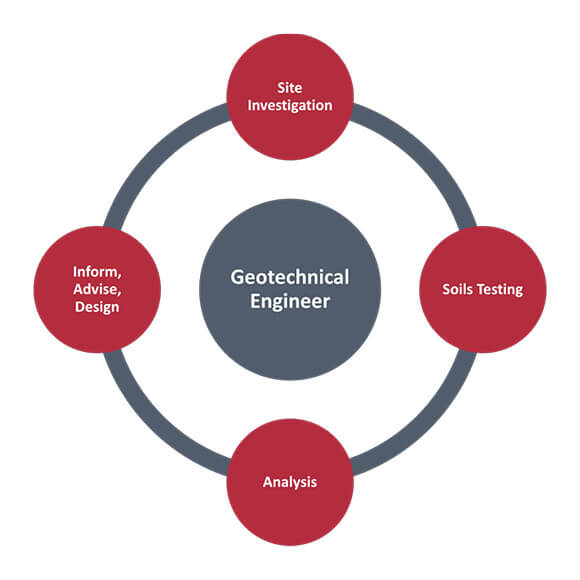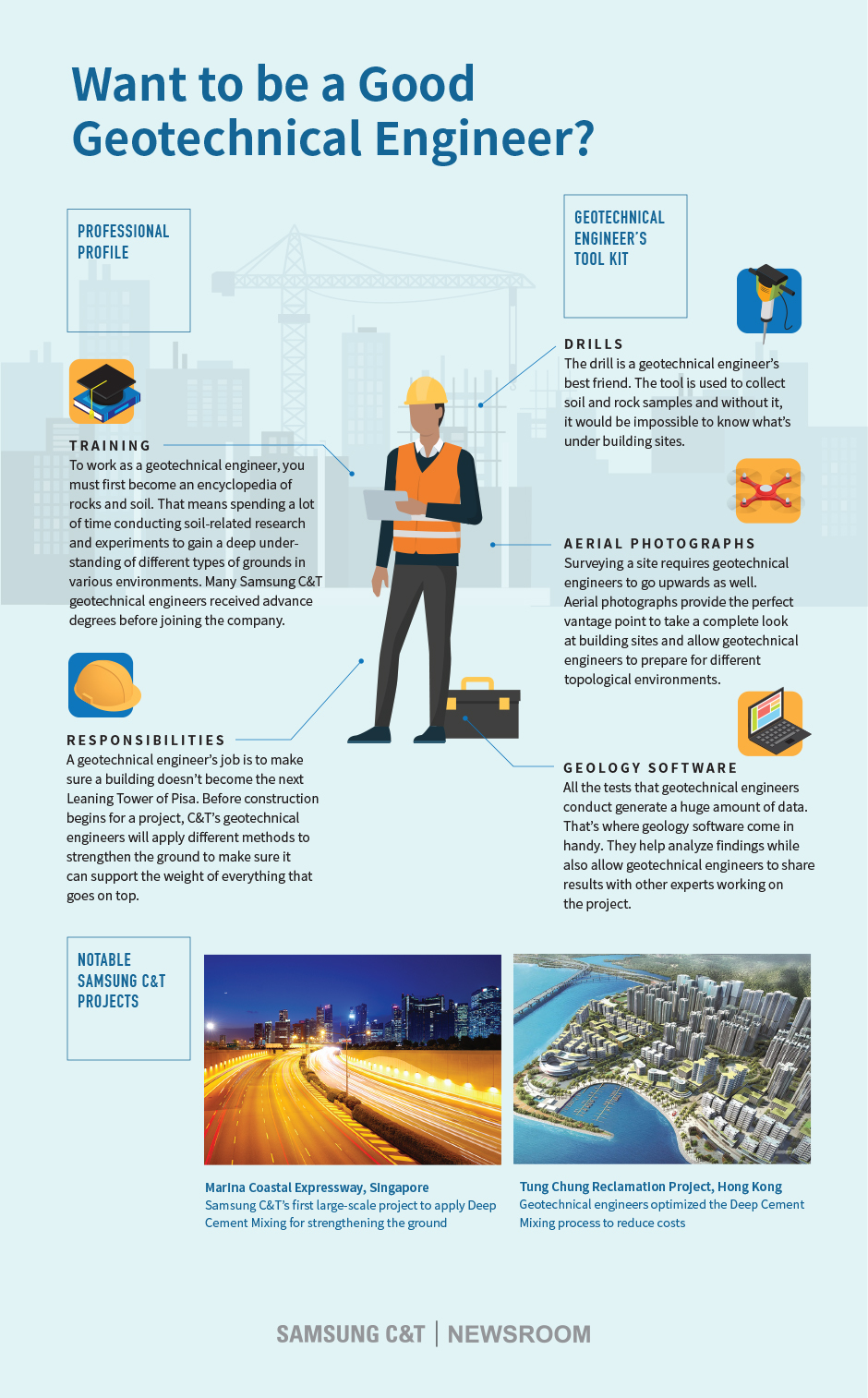Unknown Facts About Geotechnical Engineering For Construction Projects
Unknown Facts About Geotechnical Engineering For Construction Projects
Blog Article
Get This Report on Geotechnical Engineering For Construction Projects
Table of ContentsGeotechnical Engineering For Construction Projects - TruthsThe Buzz on Geotechnical Engineering For Construction ProjectsRumored Buzz on Geotechnical Engineering For Construction ProjectsThe Best Guide To Geotechnical Engineering For Construction ProjectsGeotechnical Engineering For Construction Projects - TruthsThe Of Geotechnical Engineering For Construction ProjectsGeotechnical Engineering For Construction Projects Things To Know Before You Get This
and Kovacs, W. (1981 ), An Introduction to Geotechnical Engineering, Prentice-Hall, Inc. Deep Check Technology (2023 ): Deep Check Tech discovers covert frameworks at the site of Denmark's tallest structure. "Geofrost Coring". GEOFROST. Gotten 20 November 2020. Han, Jie (2015 ). Principles and Method of Ground Renovation. Wiley. ISBN 9781118421307. RAJU, V. R.Ground Enhancement Technologies and Instance Histories. Singapore: Research Publishing Providers. p. 809. ISBN978-981-08-3124-0. Ground Improvement Concepts And Applications In Asia. Pariseau, William G. (2011 ). Layout evaluation in rock technicians. CRC Press. Hegde, A.M. and Palsule P (Geotechnical Engineering for Construction Projects).S. (2020 ), Efficiency of Geosynthetics Reinforced Subgrade Subjected to Repetitive Vehicle Loads: Speculative and Mathematical Studies.
Cengage Discovering, Stamford, 666 p. Atkinson, J., 2007. The auto mechanics of soils and structures. Taylor & Francis, N.Y., 442 p. Floating Offshore Wind Generators: Feedbacks in a Sea state Pareto Optimum Designs and Economic Evaluation, P. Sclavounos et al., October 2007. Nicholson, D, Tse, C and Dime, C. (1999 ). The Observational Technique in ground design principles and applications.
See This Report on Geotechnical Engineering For Construction Projects
Lab and field testing plays an essential role in this process. By extracting samples from the earth's subsurface and applying a suite of examinations, geotechnical designers can anticipate the behaviour of dirt layers and examine their suitability for various construction efforts. The essence of geotechnical engineering in civil engineering can not be overstated, attributable to a number of elements: The initial step in any kind of geotechnical research entails identifying the soil kind at the building website.
Recognizing these qualities makes certain that only suitable soil types are picked for the advancement, thereby preventing possible architectural failures. The foundation functions as the bedrock of any type of construction task. Choosing the suitable structure type is a decision that hinges on the detailed analysis offered by geotechnical design. This ensures the durability and security of structures by fitting the loads they will bear.

Geotechnical site examination is a crucial action in the planning and implementation of any kind of building project. It involves the collection and evaluation of information connected to the physical buildings of dirt and rock under a recommended building and construction site. This details is vital for the layout and construction of secure, stable, and sustainable frameworks.
6 Easy Facts About Geotechnical Engineering For Construction Projects Shown
In this blog, we will explore the significance of geotechnical site investigation, its various components, and exactly how it benefits building and construction projects. Geotechnical website investigation, additionally called subsurface expedition, includes a collection of activities aimed at figuring out the soil, rock, and groundwater problems at a building site. The key goals are to identify possible geotechnical risks, evaluate the engineering properties of subsurface products, and give referrals for the layout and construction of structures, maintaining walls, and other structures.
This might include geological maps, airborne pictures, previous examination reports, and historical information. The desk research assists in determining potential geotechnical problems and planning the succeeding fieldwork. Complying with the workdesk research study, a website reconnaissance is carried out to visually inspect the site and its surroundings. This includes observing the topography, water drainage patterns, existing structures, vegetation, and any kind of signs of instability or erosion.
How Geotechnical Engineering For Construction Projects can Save You Time, Stress, and Money.
Superficial examination pits are excavated to straight observe and sample the dirt and rock. This approach serves for examining the upper layers of the subsurface and determining near-surface dangers. Non-invasive geophysical methods, such as seismic refraction, ground-penetrating radar (GPR), and electrical resistivity tomography (ERT), are used to map subsurface conditions and discover anomalies.
Dirt and rock samples gathered throughout the field examination are subjected to research laboratory testing to identify their physical and mechanical properties. Usual laboratory examinations include grain size evaluation, Atterberg limitations, compaction examinations, triaxial shear examinations, and loan consolidation tests. These examinations give essential information for geotechnical evaluation and layout. The information browse this site gathered from the desk study, website reconnaissance, area investigation, and research laboratory testing are assessed and translated to create a detailed understanding of the subsurface problems.
The main advantage of geotechnical site examination is making certain the safety and stability of structures. By understanding the subsurface conditions, engineers can design foundations and other structural elements that can withstand the loads and environmental forces they will be subjected to. This reduces the danger of settlement, decrease, and architectural failing.
Getting The Geotechnical Engineering For Construction Projects To Work
For instance, recognizing soil attributes can lead the option of excavation strategies, dewatering methods, and ground renovation procedures. This guarantees efficient and safe construction practices. Geotechnical site examinations are commonly needed by building codes and regulations. Abiding by these requirements makes sure compliance with legal and safety and security standards, staying clear of potential lawful obligations and project hold-ups.
This details is vital for job supervisors, architects, and contractors in developing realistic schedules, budgets, and contingency strategies. Geotechnical Engineering for Construction Projects. Skyscraper Building in a Coastal AreaIn a coastal city, a skyscraper residential building was intended on a website with presumed loose sand down payments and a high water table. A comprehensive geotechnical investigation, consisting of borehole exploration, CPT, and geophysical surveys, was performed
Geotechnical Engineering For Construction Projects Things To Know Before You Buy
Based on these findings, the foundation layout was customized to consist of deep stack foundations prolonging into steady strata, and ground renovation methods, such as vibro-compaction, were carried out to alleviate liquefaction risks. This aggressive method made sure the security and security of the structure while staying clear of costly post-construction removal. Framework Advancement on a Sloping TerrainA major infrastructure project, involving the construction of a highway and bridges, was planned on a sloping surface with steep inclines.

The Leaning Tower of Pisa (Italy), a famous building wonder, is well known for its unintended tilt from considerable geotechnical problems. The tower's structure was inadequately designed to deal with the soft, unpredictable dirt under it, resulting in uneven settlement and its distinct lean. Our globe is populated with remarkable facilities projectsfrom looming high-rise buildings to stretching bridgesall standing statement to the evolution of the different building devices and approaches available.
Geotechnical design is a specific field within civil design that concentrates on studying the actions of planet products. This branch digs deep right into the groundinvestigating exactly how the soil, rock, and groundwater at a building and construction website can influenceand be influenced bythe facilities that we put up on and right into them. Before a solitary brick is laid or a concrete structure poured, geotechnical designers probe right into the earthgathering critical information about the site's dirt structure, rock structure, and More Bonuses groundwater degrees.
What Does Geotechnical Engineering For Construction Projects Mean?

is a device used to examine the honesty and load-bearing capacity of heaps during installment, leveraging the principle of wave propagation. It maximizes building effectiveness by supplying real-time examinations, therefore making sure risk-free and reliable stack foundations. One of the sensible applications of geotechnical engineering includes deciding and performing the ideal approaches for structure building and construction.
Pile driving represents even more than the simple act of placing architectural elements into the ground. As a matter of fact, it is a thoroughly coordinated process of moving a framework's load past the much less secure soil layers better to the surfacedown to the extra substantial strata that exist below. In the instance of heap driving, think about how geotechnical designers expertly utilize this method to equally distribute the structure's weight.
Report this page